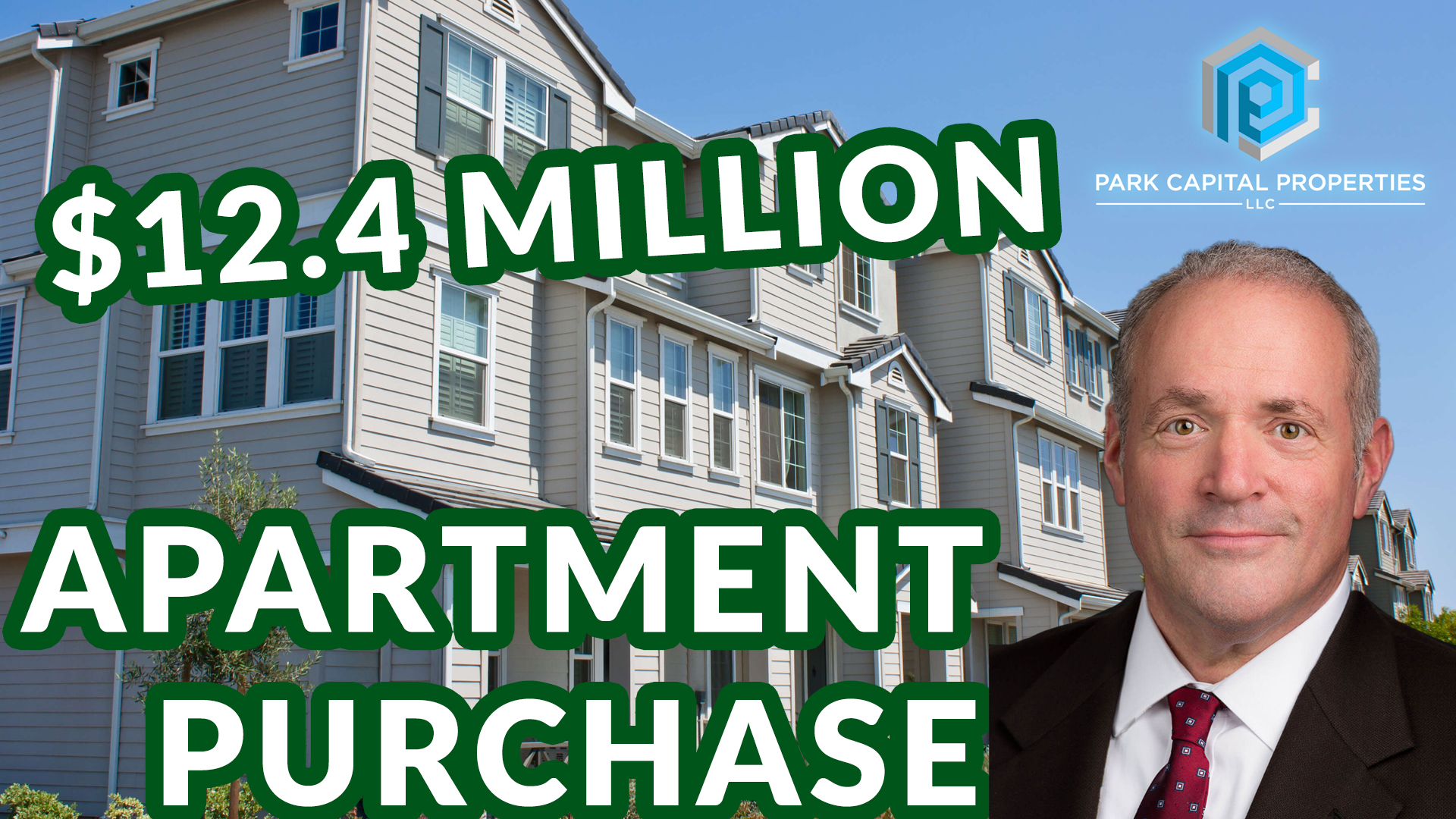Bill Zahller, is the founder of and a current partner in Park Capital Properties. Park Capital Properties specializes in raising private capital from passive investors in order to acquire Apartments. Zahller began his real estate career in single-family units about 15 years ago in Arizona, moved to Asheville a decade ago and found himself questioning his business plan. As he ran the math and looked at scalability, multi-family investing and more units may be the ideal solution. He found that multi-family investing simply made more sense – he wanted to increase the number of units in his portfolio to scale up his business, but didn’t want to have to manage a large number of single-family units. By focusing on Multi-Family Investing, he was able to handle more leases, bring in more income, and in turn hire employees to handle the day-to-day aspects of management rather than having to do it himself. It was, for Zahller, a no-brainer.
For real estate investors just entering the game, the logical first step is often to focus on single-family units – that is, homes intended to house a single tenant or family of tenants at a time. They are, generally speaking, relatively easy to manage – a single lease for a single building, fairly predictable upkeep, and maintenance, and few tenants to communicate with. But for investors looking to increase their return on investment after gaining a bit of experience, Multi-Family Investing may be the ideal solution.
Of course, before entering into any investment, it’s critical to understand what exactly you’re getting into. Single-family housing is fairly straightforward – one building per tenant or group of tenants – but multi-family housing can be a bit more complex. Generally speaking, anything with more than one unit in a single property is considered multi-family housing. A property with two to four units is considered to be residential, while a property with five or more is commercial – these are the types of properties that Zahller focuses on, although usually on a much larger scale. He and his company typically invest in properties with at least 100 units, as this enables them to have adequate staff on-site; every 50 units, Zahller says, generally, support one employee.
A basic understanding of multi-family housing is important, but an in-depth mastery of this type of investment is the key to success. According to Zahller, the best way to become well-versed in multi-family unit investment is simply to educate yourself. As he began to move towards this type of investing, he immersed himself in books, Podcasts, and other media to learn as much as he possibly could about different approaches to multi-family unit investment. Rather than having to reinvent the wheel, so to speak, Zahller suggests that new investors “find someone who’s doing what you want to do at a high level, and copy it.”
And that’s exactly what he did – as he began to make his transition from single-family units, Zahller connected with Joe Fairless, a highly successful investor in multi-family units with a background similar to his own in many ways, who had built up a multi-billion dollar business in a matter of only five years or so. In short, he found someone who had accomplished exactly what he hoped to do, and copied him.
With Fairless as his mentor, Zahller began to find success in multi-family unit investment. In particular, he focused on value-added deals. These, essentially, are deals that allow the investor to buy relatively cheaply, invest in the improvement of the property – adding value – and then sell to turn a significant profit. Most typically, these properties haven’t been renovated in the past ten to twenty years, and are renting significantly lower than comps in the area. His and his partnership’s approach has been to look closely at the risk-reward balance of potential investments, and to purchase in certain areas where their investments are likely to gain value long term. The areas in which they purchase are generally classified as B+ areas, on a scale of A through D, meaning that they’re desirable but stable, and likely to maintain their livability in a recession or other economic downturn. The easiest way to add value to a property, Zahller says, is to find a C property in a B area and improve it.
As evidenced by this process, Zahller’s partnership is very data driven. “But,” he says, “it’s an art and a science.” The numbers have to make sense, first and foremost, but the gut feeling has to be there as well. He advises investors to never buy a property sight unseen, as becoming familiar with not just the property but also the surrounding area and neighborhood is essential to understanding how good of an investment it is likely to be long-term.
Knowing whether a multi-family property is a good investment is, in many ways, far more important than knowing whether a single-family property is. One of the major differences between multi-unit and single-unit investment, Zahller says, is that you have to have a lot more money up front for multi-unit properties. These are often multi-million dollar properties, he points out, and if you’re not well-informed or working with someone who is, you could potentially make a very costly mistake.
For investors who prefer to stay on the back end of things – investing money rather than time and effort – this is just as important. Working with other investors who know what they’re doing is critical, as it can help to prevent an investment from going south. One way of ensuring that the investors with whom you work are informed and skilled is to utilize syndication to identify accredited investors to join together on an investment. This is primarily what Zahller’s partnership does, and it enables them to utilize available capital to make an investment, hold the property for a number of years, usually around 5, and enjoy the cash flow for that time, and then sell for a profit.
Even following this basic model, though, their “exit strategies,” so to speak, don’t always look the same. In some cases, the partnership will perform all needed renovations on a property, raise rents accordingly, and then sell to funds who hold properties long-term for cash flow at a relatively low but stable and passive return. In other cases, they will do somewhere around half of the needed renovations, then sell the property at a profit to someone who now has a path to a value-added investment and can subsequently complete the remaining renovations. Either way, the original investors have profited from the investment much more significantly than they would have with a single-family property.
With all of this in mind, multi-family property investment can seem like the ideal method of real estate investment – it is often less labor intensive than single-family property investment, and can have much bigger returns. But, whether you’re a brand new investor or have experience in single-family property investment, how should you go about getting started with multi-family property investment? “Just get educated,” Zahller says. “Learn all you can [about] it, and then go to groups.” On the whole, he believes, investors and other real estate professionals like to share information, and are more than willing to help new investors succeed. “Enjoy studying and enjoy learning,” he says, and you’ll be on the path to successful investment in no time.
To find out more about investing in multi-family properties, visit ParkCapitalProperties.com.
Subscribe to our NEW Monthly Newsletter Here!




